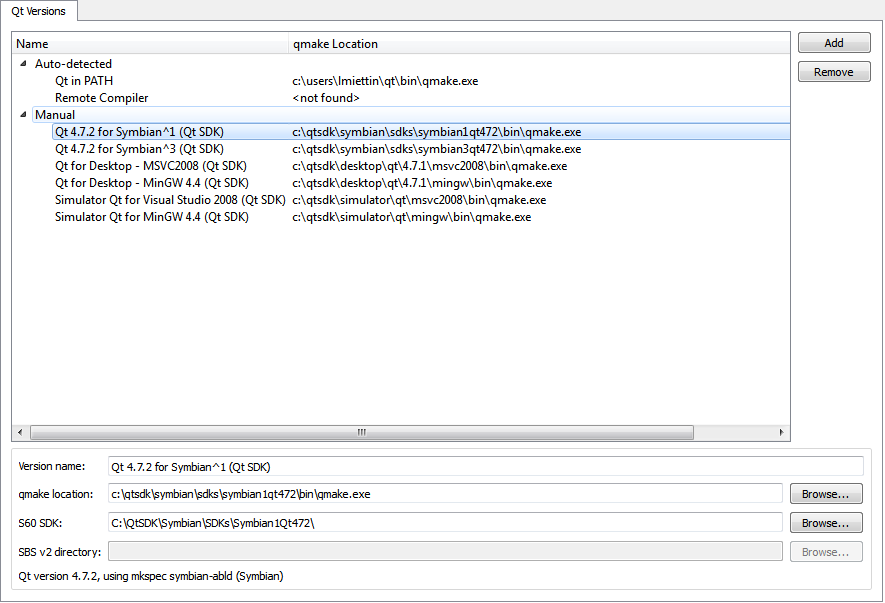- Accueil Actualités IT Pro
- Conception Cycle de vie du logiciel
- Java Plateforme et langage Java
- .NET Microsoft Framework .NET
- Dév. Web Développement Web et Webmarketing
- EDI Environnements de Développement Intégré
- Langages Langages de programmation applicatifs
- SGBD Systèmes de Gestion de Bases de Données
- Office Bureautique pour l'entreprise
- Solutions d'entreprise Autres logiciels pour l'entreprise
- Applications Applications logicielles
- Systèmes Logiciels et matériels systèmes
Setting Up Development Environment for SymbianFor more information about developing applications for the Symbian platform, select Help > Index and look for Platform Notes, or see Platform Notes - Symbian. Hardware and Software RequirementsWindows is the only development platform for the Symbian target supported at the moment. For deploying and running applications on the device, you need the following:
To run your applications in the Symbian emulator, you also need to install Carbide.c++ v2.0.0 or higher. Installing Required Applications on DevicesThe Nokia Qt SDK installation program creates shortcuts for installing the required applications on Symbian devices (you can also use any of the standard methods for installing applications on devices):
Note: If errors occur during the installation, copy the .sis files from <NokiaQtSDK_install_path>\Symbian\sis to the device using USB storage mode. Then install them from the file manager on the device. Adding Symbian Platform SDKsNokia Qt SDK contains all the tools you need for developing Qt applications for Symbian devices. To use Symbian APIs directly in your applications, you can install additional Symbian Platform SDKs:
Setting Up Qt CreatorWhen you run Qt Creator after installing the Symbian SDK and Qt for Symbian, the installed SDKs and their corresponding Qt versions are automatically detected. For each detected Symbian SDK with Qt, a special entry is made in the Qt version management settings in Tools > Options... > Qt4 > Qt Versions. Note: If you manually add a Qt version for Symbian, you must also manually specify the Symbian SDK to use for this version.
If you want to run your applications in the Symbian emulator, you need to point Qt Creator to the Metrowerks Compiler that you want to use, by setting the Carbide directory of the Qt version to the corresponding Carbide.c++ installation directory. You can check which Symbian SDKs and corresponding Qt versions are found in the Tools > Options... > Qt4 > S60 SDKs preference page.
© 2008-2010 Nokia Corporation and/or its subsidiaries. Nokia, Qt and their respective logos are trademarks of Nokia Corporation in Finland and/or other countries worldwide. All other trademarks are property of their respective owners. Privacy Policy X
|





















